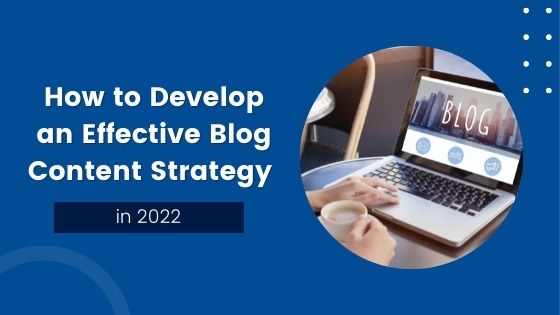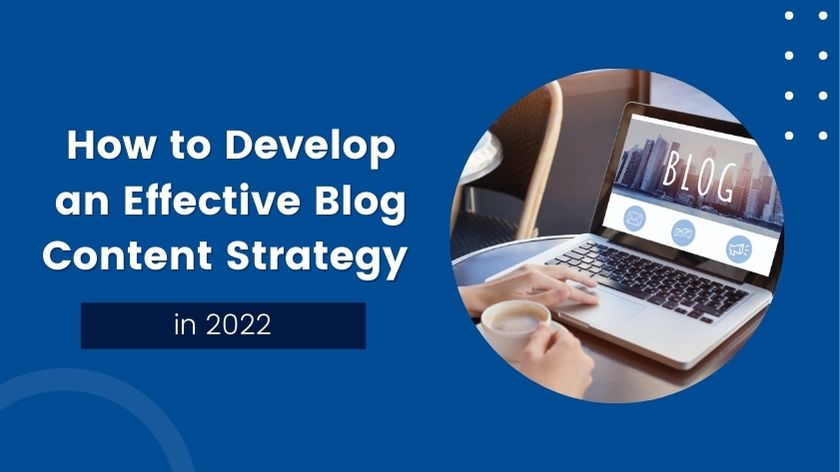Every business needs a blog section on its website. Blog posts educate your readers, show your expertise and give you the chance to use SEO keywords that don’t fit on your main page. With a steady stream of content, you’ll attract an audience that boosts your traffic and increases your website’s visibility.
Not every customer goes online because they want to make a purchase, and many customers want to educate themselves on a topic–and when your blog has the answer, they might stay and browse the rest of your website. You’ll build brand recognition and encourage visitors to share your blog posts with friends and relatives.
However, it’s not as simple as writing a 200-word blog post, uploading it, and waiting for the traffic to arrive. The best blog content strategies help you reach a broad audience that you might not receive otherwise. Once you’ve established your site as a source of knowledge, you’ll earn respect from other business owners in the industry.
1. Use Advanced SEO Strategies
Use advanced SEO techniques to boost your search engine rankings as you incorporate search engine optimization (SEO) keywords into your site. The Google algorithm takes mobile-friendly websites into consideration. If you don’t have an optimized mobile website, you’ll earn less traffic and drop in the rankings. A large percentage of traffic comes from mobile users–and they won’t waste time scrolling through a clunky website.
Similarly, talk to an SEO company about improving your website’s loading time. Customers expect pages to load within seconds in today’s world of instant gratification. A slow-loading website recalls the days of dial-up Internet, which makes customers jump to a competitor’s website. The best SEO company could optimize your site so it loads in less than two seconds.
While blog posts promote your website and provide great content, not everyone wants to read paragraphs of text. Break up your content with videos, infographics, charts, rankings, and social media posts. More traffic means more conversions–and a higher search engine ranking. You can also refresh old content to keep your website clean and up-to-date.
2. Write Long-Form Blogs
Long-form content is an article or blog post covering a topic in-depth, often with 700 words or more. Some websites shy away from long-form content because visitors prefer short bursts of content. However, some visitors need in-depth content that educates them about the subject instead of covering the basics. You’ll attract visitors who crave knowledge, which increases your credibility–and your conversions. As you build content, you’ll gain knowledge about your industry that helps you better serve your customers.
This blog post that you’re reading now is an example of long-form content. Since you’re reading it right now, you know that long-form articles have an audience. Intersperse your short blogs with long-form articles that require research and knowledge on the topic. Visitors may share your content, link to it on other websites, and use it as a starting point for more extensive research. Plus, educating readers about your industry adds value to your product or service. Your visitors will realize that your product fulfills a need they didn’t know they had.
3. Add Rich Snippets
Rich snippets offer more information than a traditional search engine result. For example, if your site doesn’t have a rich snippet, Google offers a link, title, and short excerpt. Your site blends in with every other result, causing visitors to skip over your website.
When you add a rich snippet to your website, Google shares a graphic description with a picture, bullet points, tips, and information about your content. For example, if you run a recipe blog, your rich snippet could offer a picture of the recipe, a list of ingredients, and the time it takes to prepare the dish.
Rich snippets make your website stand out among the search results. They also give visitors the data they need at a glance, encouraging them to click on your website. More views mean more traffic, which means more sales and ad commissions. Talk to the best SEO company to add rich snippets to your site.
4. Avoid Zombie Pages
Zombie pages are useless pages that turn off visitors and drag down your search engine rankings. Google evaluates your site as a whole when the algorithm determines your ranking. If your website has a large number of zombie pages, Google assumes that you have a low-quality website. Likewise, if viewers have to sift through broken links and empty pages, they’ll jump to a competitor’s website.
Common zombie pages include:
- Non-responsive pages that take too long to load or don’t load correctly
- Outdated pages with broken links or formatting issues
- Pages with less than 300 words of content
- Pages that take too long to load, making it impossible for Google to index them
- Pages with no search engine optimization (SEO)
- Pages that the rest of your website doesn’t link to, making them impossible to access
To delete zombie pages, use an analytics tool to determine each page’s performance or talk to an advanced SEO company like Send It Rising. We’ll eliminate as many zombie pages as possible to keep your website concise, professional, and easy to navigate. You’ll rank higher in the search results and improve your visitors’ experience, making them more likely to hire you.
5. Be Consistent
Provide a consistent flow of blog posts, content updates, and social media posts to engage your audience. If visitors see that you haven’t updated your website in months, they’ll assume that you abandoned your business. Stick to a schedule, and keep posting even if you feel like no one reads your content. The right people will stumble upon your website.
Staying consistent shows returning customers that you’re still in business and dedicated to serving your region. If they share your social media posts, you get free advertising. You can also promote social media posts to reach a wider audience. Talk to the best SEO company about producing consistent content that includes graphics, videos, and blog posts.
6. Create a Content Calendar
If you don’t evenly space out your blog posts, you could run out of content in a few days and let the blog stagnate. A content calendar keeps your writers on track, promotes your website with SEO, and ensures a steady flow of content for months to come. Your blog isn’t just an advertisement for your website–it’s a steady stream of information that educates your visitors.
Create a content calendar that plans your content at least 30 days in advance. Choose a topic for each blog post, give the writer a deadline, and add two or three days for editing. When you post your content, limit yourself to one or two blog posts a day. Continuous content creation keeps your blog relevant and helps you stay on top of industry news. Give your writers a variety of topics to write about–your blog will stagnate if you repeatedly post about the same subjects.
7. Hire an SEO Company
Instead of stressing over building a blog section, hire an SEO company like Send It Rising to produce content for you. We write blog posts, eBooks, and rich snippets. To break up your content, we produce videos that educate and entertain your visitors. Talk to a content specialist to see what we could do for your website. We offer a consistent stream of content that keeps your website updated for months to come.
Other services include social media posts, graphic design, web security, search engine optimization, e-commerce solutions, and website maintenance. Check out our eBooks for sale to get tips and knowledge that you’ll apply to your marketing strategy. If you want a live example, this blog post is the type of content that we’ll produce for your website. Reach out to Send It Rising to learn more about our services.












Leave A Comment